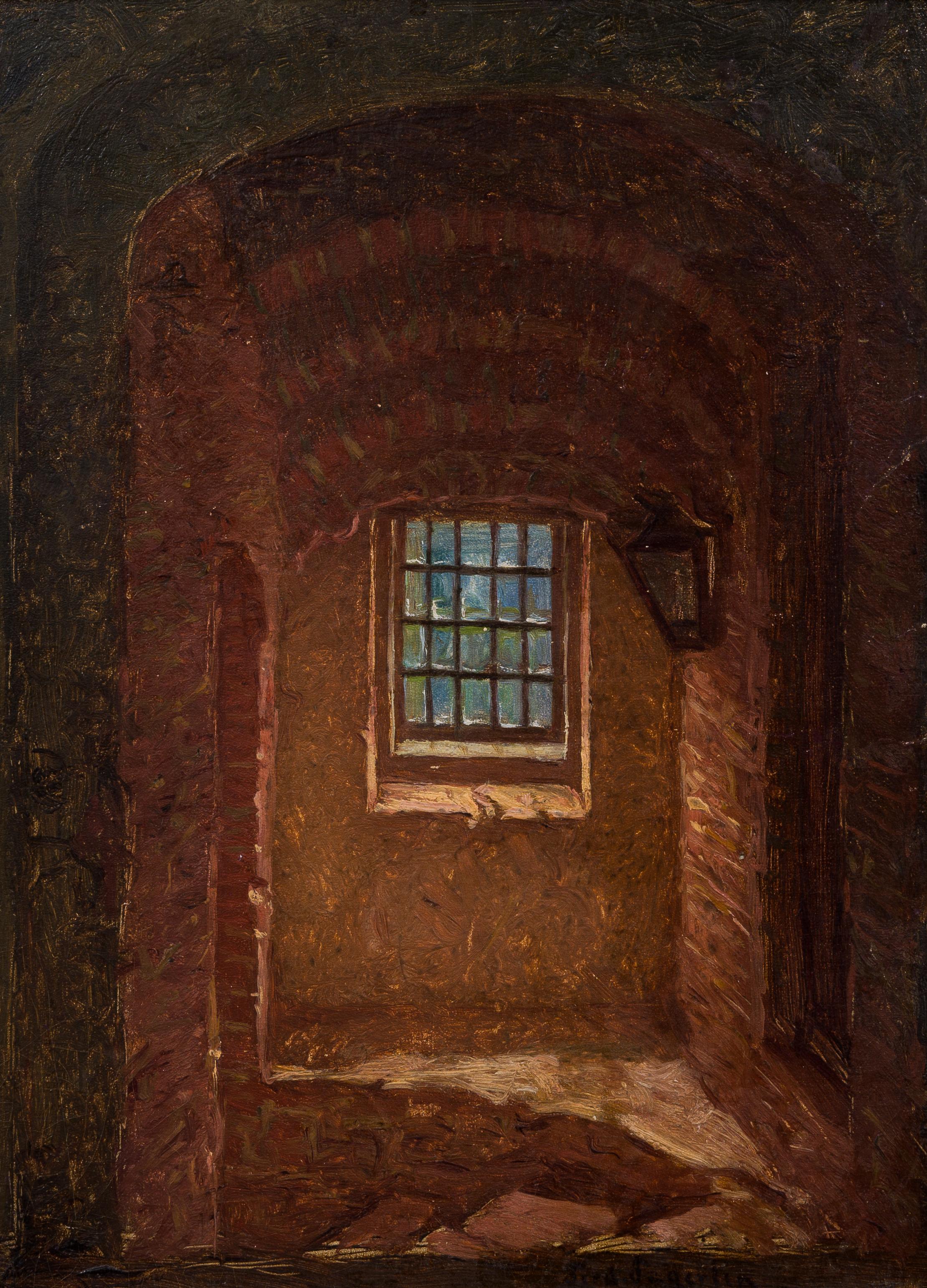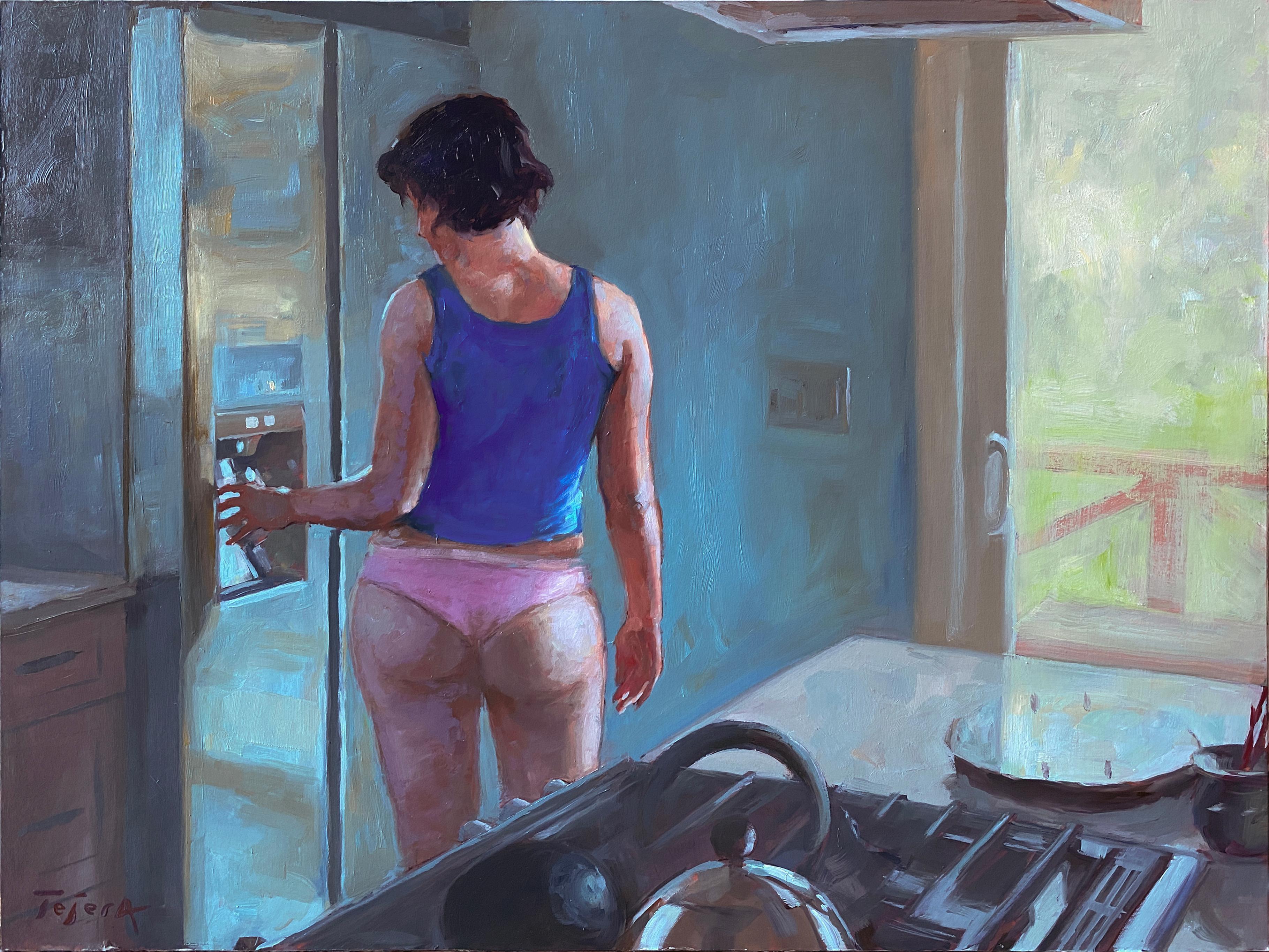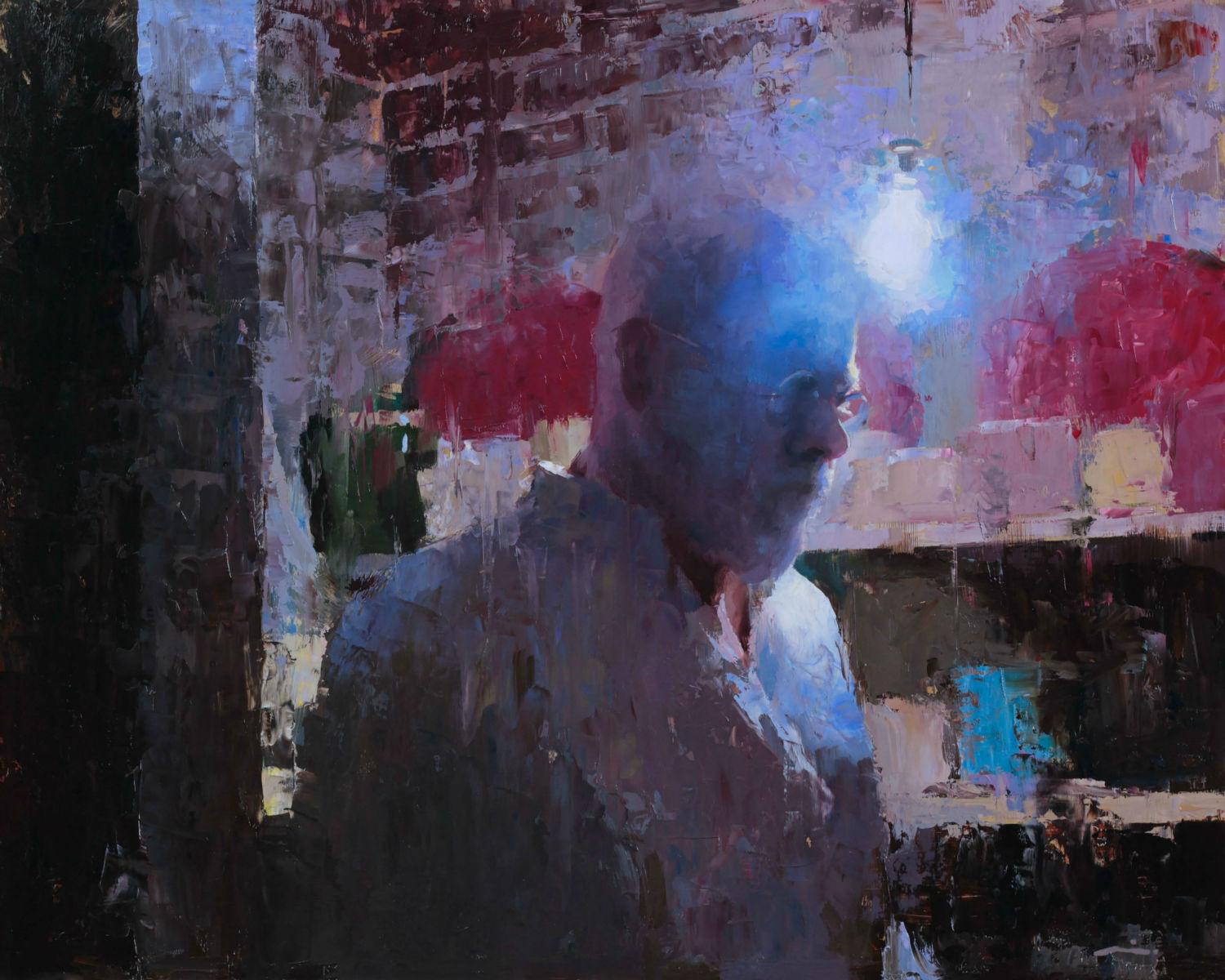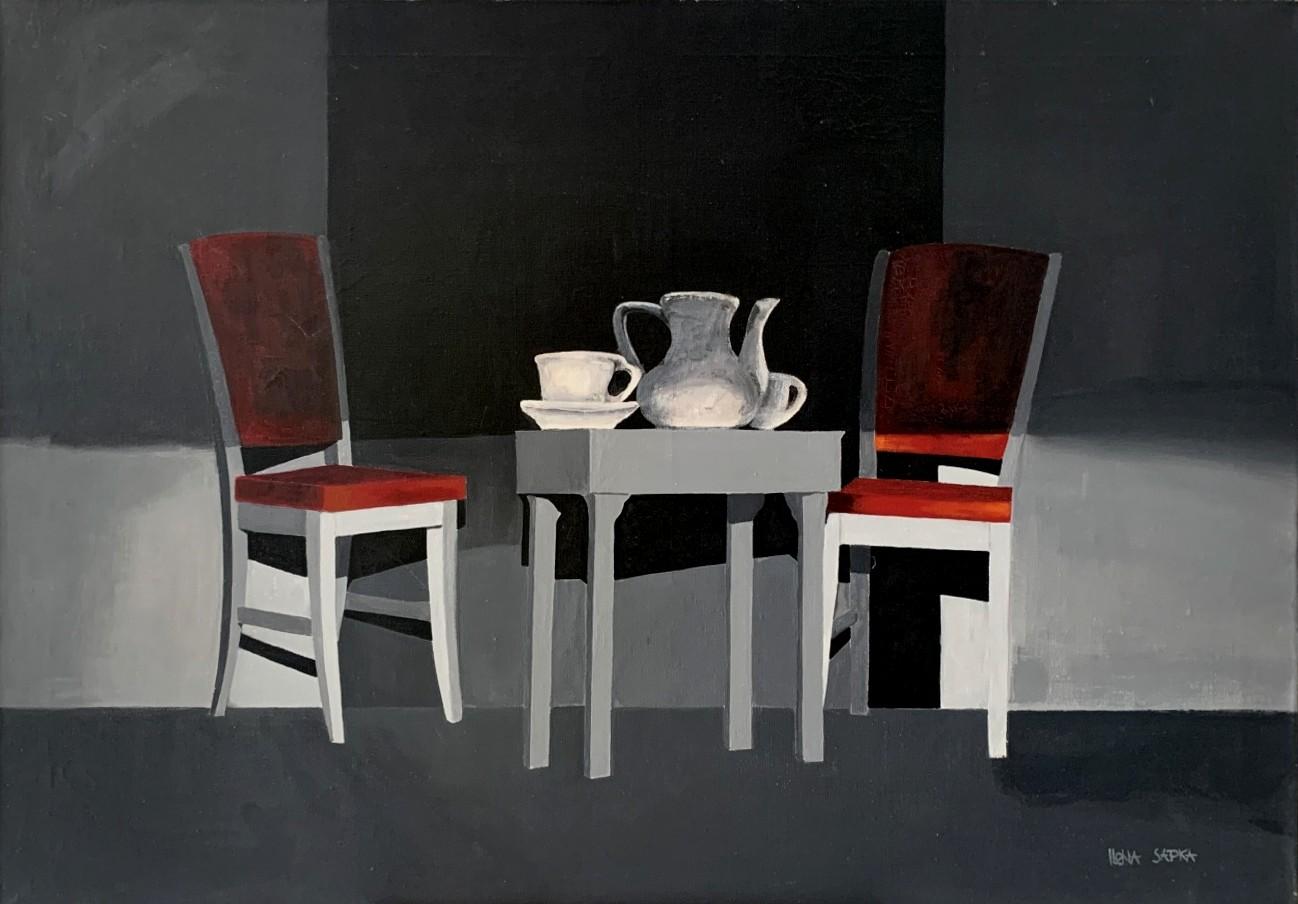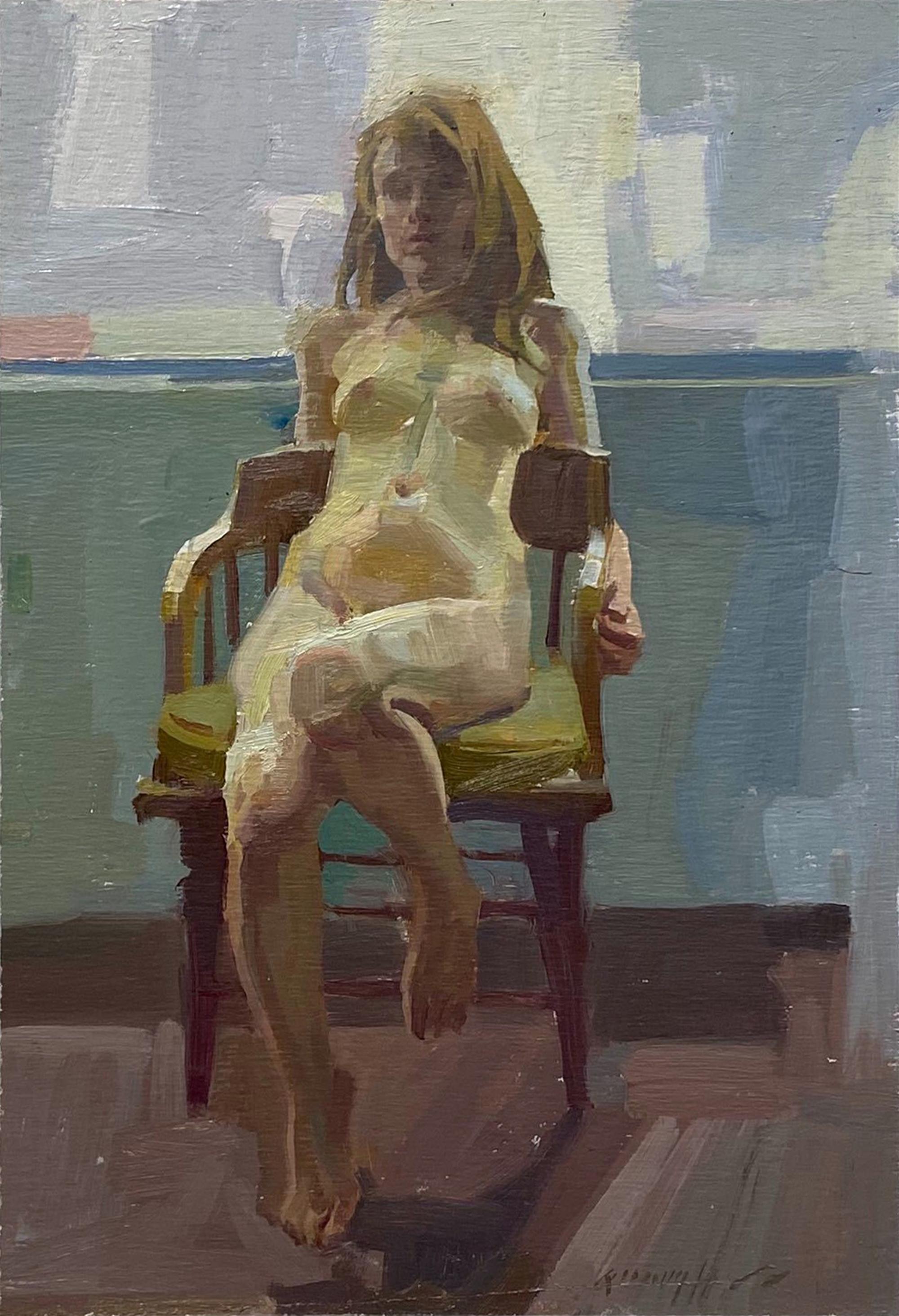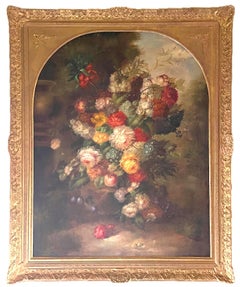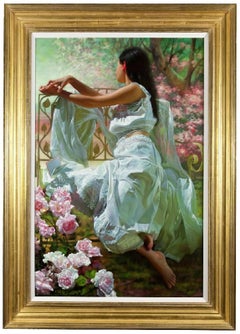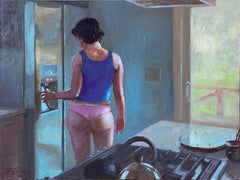
Oil Painting on Panel by Charles Martin Hardie RSA
View Similar Items
Want more images or videos?
Request additional images or videos from the seller
1 of 9
Charles Martin HardieOil Painting on Panel by Charles Martin Hardie RSA 1880
1880
About the Item
About the Seller
5.0
Vetted Seller
These experienced sellers undergo a comprehensive evaluation by our team of in-house experts.
Established in 1966
1stDibs seller since 2019
18 sales on 1stDibs
Typical response time: 1 hour
More From This SellerView All
- Acrylic on Canvas Signed P.J. Crook 'The swimming Pool' 1989Located in Uppingham, GBAcrylic on Canvas by P.J.Crook titled 'The Swimming Pool' with the frame painted as part of the picture as well. PJ Crook lives and works in Gloucestershire ...Category
1980s Modern Figurative Paintings
MaterialsAcrylic
- Oil Painting, Large Still Life Oil Circle of Emillio GrecoBy Emilio GrecoLocated in Uppingham, GBLarge 20th Century Still Life Oil Painting (unsigned) circle of Emilio Greco (Italian, born 1932) Very nice gilded frame with Arched panels. 72" x 40". Very attractive wall filler.Category
1990s Realist Still-life Paintings
MaterialsOil
- Portrait of Girl with Flowers by Andrei Belichenko & Maria BoohtiyarovaBy Andre BelichenkoLocated in Uppingham, GBA Wonderful Oil on canvas by Andrei Belichenko & Maria Boohityarova. Two excellent Russian artists who have been exhibiting in France, their works are centred around exquisite detail...Category
2010s Realist Portrait Paintings
MaterialsOil
- Oil Painting, Small Shooting Scene By Chapman Bayley (British, Active 1818-1832)Located in Uppingham, GBOil on canvas Shooting by the woods by Chapman Bayley (1818-1832) Early 19th Century gent standing by the woods with his two dogs shooting. Signed by the artist in original frame. Ch...Category
1820s English School Figurative Paintings
MaterialsOil
- Portrait of a Lady, After Sir Peter Lely (1610-1680) Oil PaintingBy After Sir Peter LelyLocated in Uppingham, GBOil Painting After Sir Peter Lely (1610-1680) Portrait of a Lady Housed in a Lely gold Leaf Frame. Peter Lely: In 1647 he became a member of the Pain...Category
17th Century Old Masters Portrait Paintings
MaterialsOil
- Oil on canvas by Eugene Verboeckhoven & Alexander Daiwaille (1796-1881)By Eugène VerboeckhovenLocated in Uppingham, GBOil on canvas by Eugene Verboeckhoven (1796-1881) & Alexander Daiwaille (1818-1888) Landscape with cattle & sheep on a farm track. Signed by both artists. Canvas size: 22" x 31" Fr...Category
1870s Realist Landscape Paintings
MaterialsOil
You May Also LikeView All
- The Old Stone Stairway By Düsseldorf Artist Ferdinand FagerlinLocated in Stockholm, SEThis oil painting called The Old Stone Stairway by Ferdinand Fagerlin offers an intimate glimpse into a quiet interior space, where the stillness of...Category
Late 19th Century Realist Interior Paintings
MaterialsOil, Board
- A Jolly Time -- German Genre Tavern Painting, 1918Located in Soquel, CAWonderful German genre painting of 17th century tavern scene in style of Franz Hals by Karl Josef Muller (German, 1864-1942) dated 1918. Signed and dated lower left corner "Karl Muller - Hamburg 1918". Condition: Good; professionally restored: Canvas restreched on new stretcher bars; five repairs made to small tears in canvas (see image); cleaned and re-varnished with UV-resistant varnish. Unframed. Image size: 39.5"H x 55"W. We have the original frame which needs some extensive repair to the gesso. Happy to include the frame with the painting as is. Karl Müller was born in Hamburg-Altstadt in 1865. His wealthy Jewish parents Abraham Müller (1832-1896), citizen of the Hanseatic city since 1869, and Henriette "Jette", b. Burchard (born 1832 Neubuckow / Mecklenburg), had a cigar factory at Spielbudenplatz 5 in St.Pauli. When Karl Müller was ten years old, next to factory and warehouse, now at Speersort 11 (Altstadt), there was also a branch in Altona-Ottensen with the address Am Felde 68. The family lived at the time at Pferdemarkt 13 (Old Town). After attending the Jewish Foundation School at the Zeughausmarkt, Karl Müller completed a three-year lithography apprenticeship. From 1886 to 1888, he studied at the Royal Saxon School of Applied Arts in Dresden with the history and decoration painter Donadini, then with Professor Hanke of the Prussian Academy of Arts in Berlin. Karl Müller's painting style was conventional-realistic and did not follow modern trends. In 1891, the oil paintings "Preparation for the Service", "In the guardroom", tattoo", "gymnastics lesson", "covert patrol” and "return from the field service exercise”, whose main motive almost always soldiers formed.In 1893, he painted the" invasion of the 76er " as a horizontal format in black and white, the painting was acquired by the Museum of Hamburg History in 1930. The disposition of Karl Müller could be classified as "kaisertreu" and "national" (Maike Bruhns) at this time - not by chance he acted with his Nicknamed "Soldatenmüller", he successfully participated in exhibitions in Berlin and Hamburg before the turn of the century. Even at this time, the frequent change of residence is striking: 1893 Papendamm 25 (Rotherbaum), 1896 Bundesstraße 9 (Rotherbaum). In 1898 he was in the Hamburg address book as a "genre and portrait painter" with the residential address 1. average 43 (Rotherbaum) out. At the age of 38, Karl married in 1903 in the Hanseatic city of the Jewish Louise Hauer (born 12.2.1872 in Hamburg), called "Lieschen". Before her marriage, she lived with her mother at Grindelberg 78. Her father, Martin Hauer (1836-1897), also born in Hamburg and was a citizen of the city since 1862, owned a factory for soap and perfume. In 1904 and 1911, the two daughters Karla and Lotte were born. 1904, the family lived at this time in the Bogenstraße 20, Karl Müller commissioned a portrait of the emigrated hamburger Henry Jones opening the same lodge in the Hartungstraße 9-11. Already at this time he might have been a member of the Hamburg Artists Association of 1832. Starting from 1908 further change of dwellings on the basis of the telephone books are comprehensible: nearly yearly the family moved and moved thereby from the Grindel quarter over Hoheluft east to Harvestehude and Winterhude. Around 1912 she moved into an apartment in Sierichstraße 156. Here, the landlord Schröder provided the artist with an area of around 45 square meters as a studio on the dry floor. But the building police criticized this use and after some disputes, the painter had to move once again with family and studio. The official telephone directory recorded as an address from 1914 to 1918 Klosterallee 20 (Harvestehude). Friedrich Jansa described Karl Müller's changed motif choice in his artist's glossary in 1912: "In recent years he has been watercolouring a lot in the Hamburg area and now mainly takes his motifs from Hamburg harbor...Category
1910s Realist Interior Paintings
MaterialsLinen, Oil
$6,000 Sale Price20% Off - Morning Drink, 12x16 oil on paper on panel , Southwest Art Magazine, Free ShipLocated in Houston, TXMorning Drink, 12x16 oil on paper on panel . Also shown in images are two other available paintings. Julian Tejera is a contemporary realist from New ...Category
2010s Realist Figurative Paintings
MaterialsWood Panel, Paper, Oil
- Double Checking the Numbers, 16 x 12 oil, Southwest Art, RealistLocated in Houston, TXChecking the Numbers 16 x 12 oil. Framed. Also shown in images are two other available paintings. Julian Tejera is a contemporary realist from New Jer...Category
2010s Realist Figurative Paintings
MaterialsPaper, Oil, Wood Panel
- "Again and Again" Oil PaintingBy Mia BergeronLocated in Denver, COMia Bergeron's (US based) "Again and Again" is an oil painting that depicts a lone man surrounded by an interior darkness that is kept at bay with only...Category
2010s Realist Figurative Paintings
MaterialsOil
- José Jiménez Aranda, Hussars at RestLocated in Madrid, ESJOSÉ JIMÉNEZ ARANDA Spanish, 1837 - 1903 HUSSARS AT REST signed, located and dated “Jz. Aranda. / Paris 1884.” (lower left) oil on wood panel 21 x 26-5/8 inches (53.5 x 67.5 cm) framed: 35-1/4 x 40-1/2 inches (89.5 x 102.5 cm.) PROVENANCE Private Collection, France José Jiménez Aranda (7 February 1837 – 6 May 1903) was a Spanish painter and brother of the painters Luis Jiménez Aranda and Manuel Jiménez Aranda. He was initiated in his first steps towards becoming a painter by Manuel Cabral and Eduardo Cano. Gifted at drawing, in 1851 he entered the Real Academia de Bellas Artes de Santa Isabel de Hungría (Royal Academy of Fine Arts of Saint Elizabeth of Hungary) in Seville. In 1868 he studied the collections in the Museo del Prado (Prado Museum) in Madrid, especially those of Goya and Velázquez. In 1867 he travelled to Jerez de la Frontera to work as a restorer and designer of stained glass. In 1871 he moved to Rome, where he remained for four years, getting to know Mariano Fortuny, who greatly influenced his paintings. In 1881 he moved to París, where he studied for nine years, painting works set in the eighteenth century in the style of Fortuny with notable success. In 1890 he moved to Madrid, painting scenes of everyday life in a more costumbrista style. The death of his wife and daughter in 1892 resulted in his returning to his city of birth for the rest of his life. There he was appointed member of the Academy of Fine Arts, where he became a teacher, a position he held until his death in 1903. Daniel Vázquez Díaz, Eugenio Hermoso, Ricardo López...Category
1880s Realist Figurative Paintings
MaterialsOil, Wood Panel
Recently Viewed
View AllMore Ways To Browse
Stewart Scotland
Stewart Of Scotland
Antique Sports Pictures
Martin Hardie
Al Urban
Bernard Oil Paris
Blue Bull
Jefferson Painting
Jewish Ink Drawing
Marcel Board
Oil On Canvas Battle Scenes
Painters Bench
Paintings Of Indian Men
Religious Oil On Panel
Wpa Mural Study
Colorful Mask
Mother And Baby Painting
Oil On Wood Miniatures
